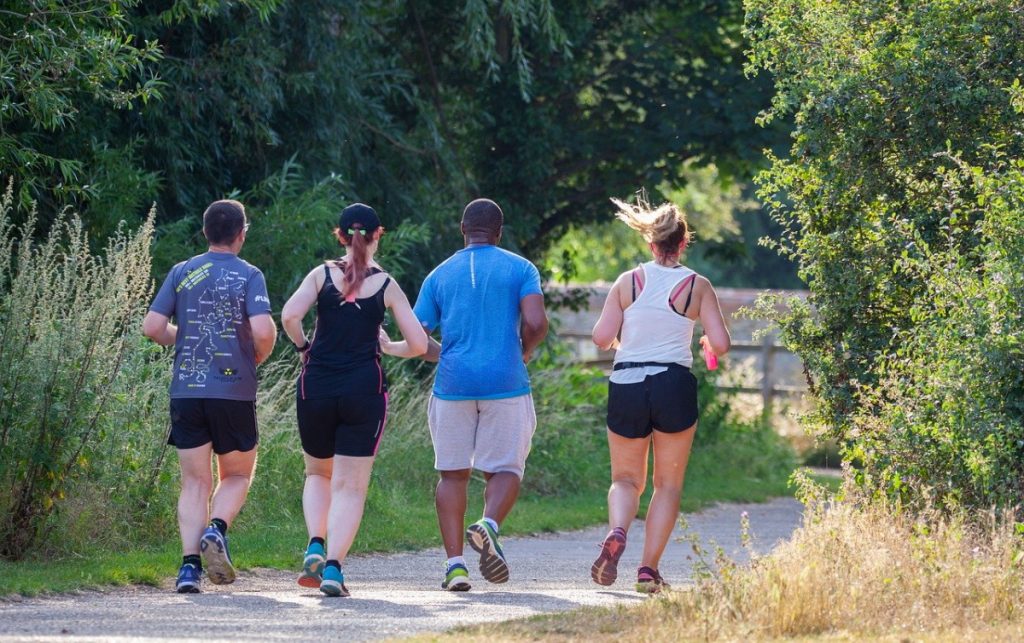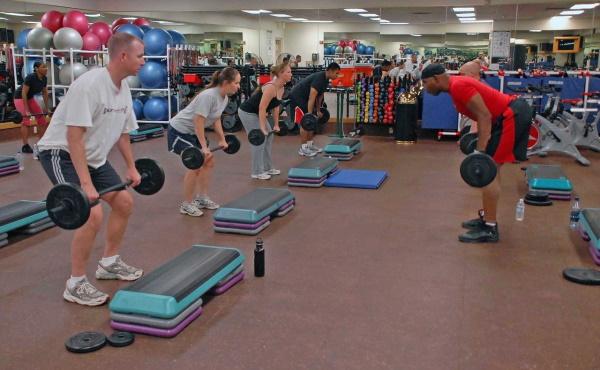Whether you started running recently or you’ve been doing it for a while, there is a high chance that you might want to increase your running speed and endurance. Well, you are not alone. Increasing running speed and endurance are the ultimate goals for every runner, regardless of their experience, skills or speed. However, becoming a faster runner doesn’t happen overnight. It calls for consistency, discipline, hard work and as well as the right training approach. The good news is that there are several strategies that you can use to increase your running speed, without ending up with injuries. Whether you are training for an upcoming marathon or you are just a casual runner, here are some tips that can help you to increase your running speed.
Lose Excess Weight
According to a study conducted by the American College of Sports Medicine, shedding excess fat can help you to become a faster runner. For each pound of excess fat that you will lose, you will cut at least two seconds off a mile. The more weight that you are carrying, the more effort that you will expend when running from one point to the other, which means you will drain your energy reserves faster. For instance, if you try to run a distance of one mile with a 25-pound pack on your back, you will notice that it will take you longer, compared to running without one. The same case applies to your body weight. However, trying to shed excess pounds when you are training for a race can prove to be a challenge. On one hand, you are trying to fuel your body properly, so that you can maximize your training sessions. On the other hand, you are trying to shed excess pounds, so that you can run faster during the race. So, what do you do to achieve this balance?
- First, make sure you eliminate all empty or low-calorie foods from your diet. Sweetened sodas, starchy fried snacks, candy as well as sugary baked goods will just fill up your body, without any nutritional benefits. Instead, you should opt for foods like sweet berries, crunchy veggies, as well as fresh fruits.
- Second, avoid eating too much, whether you are training or not. While it’s normal to feel hungry after a training session, avoid indulging in large meals. You might end up eating more calories than you have burned, leading to weight gain.
Incorporate Interval Training
Interval training provides one of the most effective methods of increasing running speed. Just like its name suggests, interval training involves alternating sessions of high-intensity training with low-intensity training. Your interval training program will depend on your goals and the race you are training for. For instance, you can do speed repeats once per week, featuring several 200 or 40-meter sprints, and then resting for a few seconds in between the runs. After that, you can warm up your body for 5 to 10 minutes, followed by sprints of 200 meters or 400 meters. After the sprints, you can then do some light walking or jogging over the same distance, to allow your body to recover.
If you opt for the 200-meter repeats, then you should aim for 8 to 10 repeats. And if you choose the 400-meter repeats, then you should do first do 2 or 3 repeats, throw in a recovery lap in between and then add two more repeats. You can perform any of these repeats on a racing track or somewhere else where you can measure the distance covered. For instance, if you are running on the road, you can use objects like telephone poles or lamp posts to measure and mark your intervals. You can sprint for two telephones poles, recover for two and then sprint again for two or three. You should then repeat that process until you’ve covered at least one mile. If you do these interval training sessions regularly, you will notice an increase in speed with time.
Build Stamina and Endurance
An increase in running speed comes from consistency and practice. Therefore, if you want to become a faster runner, you need to hit the road multiple times per week for several consecutive months. For instance, if your longest run is 2 miles and your total weekly coverage is approximately 10 miles, you should add at least one mile every week. After about a month or so, you should be doing at least 8 miles during your long run while your weekly total should have increased by approximately 10%. Whether you are training for a full marathon or a half marathon, doing one extended run per week, combined with several shorter runs, will help you to improve your overall cardiovascular strength and fitness, and enhance your mental strength – which will come in handy during the last stretches of the race.
Hit the Hills
You can also step your interval training a notch higher by incorporating some hill work into your training sessions. Jogging uphill and downhill leads to enhanced strength in the calves, hamstrings, and quads, thus improving your overall running efficiency. You can begin by doing some hill repeats on a treadmill or on a hill near you. Training on the treadmill gives you the power to control the length and incline of the hill. However, it’s not possible to run downhill using the treadmill. You should kick-start your training with a warm-up session of 10 to 15 minutes of light running. After that, you can then hit the treadmill or a hill. Climbing up and down the stairs can also provide an equally effective workout. The number of repeats that you can manage will depend on your fitness level and running experience. If you are a beginner, you should aim for 2 to 3 repeats, adding one extra repeat every week for at least 4 weeks. On the other hand, if you are an advanced runner, then you should aim to complete six to eight repeats while adding an extra repeat every week. Don’t do more than 10 repeats per session to minimize the risk of overuse injuries.
Increase Your Stride Turnover
Also known as running cadence, stride turnover refers to the number of steps that you take per minute or the rate at which your foot strikes the ground. Most amateur runners tend to have a slow stride turnover, which means they will take longer to complete a marathon, compared to veteran runners. Most of the elite runners in the world have a stride turnover of approximately 180 steps per minute. Also, experienced runners also tend to take light, fast and short steps, while keeping their feet close to the ground as much as possible. These running dynamics help to preserve body energy while helping the athlete to move faster.
So, how can you increase your stride turnover? First, you need to identify your current running cadence. You can do this by running a distance of 5,000 or 10,000 miles at your normal pace, count the number of steps that you take per minute, and then do an average. The number you obtain is your current stride turnover. You can then use it as a baseline to improve your running cadence. Aim to increase your stride turnover by a small percentage every week. And by the end of the year, you will have made massive improvements and you will definitely be a faster runner.
Master Proper Running Form
If you want to increase your running speed, then you need to learn how to run more efficiently. And if you are running efficiently, you will cover more distance within a shorter period, use less energy and experience lower levels of fatigue. Running efficiency depends heavily on your running form. Therefore, it’s important to master proper running techniques. Inefficient body mechanics, combined with wasted energy will slow you down, leading to loss of valuable time. When you are running or jogging, make sure you keep your body straight, tall and relaxed. Also, try to land your feet beneath your center of gravity. You should also keep your shoulders relaxed, with your arms forming a 90-degree angle. Your fists should be gently clenched as if you are holding something in your palms. Also, you should focus on moving in a straight line while avoiding sideways movements. You should also make sure that the movement of your legs and feet is as natural as possible. In short, all your energy should be used to propel you forward.
Lift Weights
Strength training is vital if you want to increase your running speed. If your body lacks the power and strength needed to support your speed, you will never improve. You will find yourself running at the same pace or even slower, race after race and year after year. Apart from helping to increase your running speed, strength training also offers numerous other benefits like improved bone density, weight loss as well as reduced risk of injuries. Two to three weightlifting sessions per week should be enough to enhance your body strength and increase your speed. During those sessions, make sure you focus on the key running muscles like the quads, calves, glute, and hamstring. Some of the most effective strength training exercises that you should incorporate in your workouts include squats, deadlifts, planks, push-ups, and lunges. However, don’t over-exert yourself during the strength training sessions. After all, you are a runner, not a powerlifter nor a bodybuilder.
Wear Proper Running Shoes
Running is an intensely physical activity, which places a great amount of pressure on your feet. Therefore, whether you are doing a marathon or a short distance run, wearing the right shoes is not an option but a necessity. Running shoes are designed to provide midfoot cushioning, which helps to reduce the pressure exerted on the toes, ankles, heel, and knees when doing a run. Therefore, this cushioning will help to alleviate or even prevent back pain, knee pain, and heel pain, thus making the activity safer, comfortable and enjoyable. A proper pair of running shoes will also provide the right amount of arch support, thus helping to correct common pronation issues. According to the American Council on Exercise, wearing the right type of running shoes can also lead to improved athletic performance, which can be attributed to greater comfort, and proper foot support, among other factors. Therefore, if you have been trying to increase your running speed without any improvements, you need to check your running shoes.
Closing Remarks
By following the above tips, you will increase your running speed, boost your endurance and become a better runner. However, don’t push yourself too hard, hoping to see the results after one week or one month. Otherwise, you might end up injuring yourself, and you don’t want that. Instead, you should increase the intensity gradually while allowing your body enough time for rest and recovery. And if you do this consistently, you will definitely see the results.





0 comments